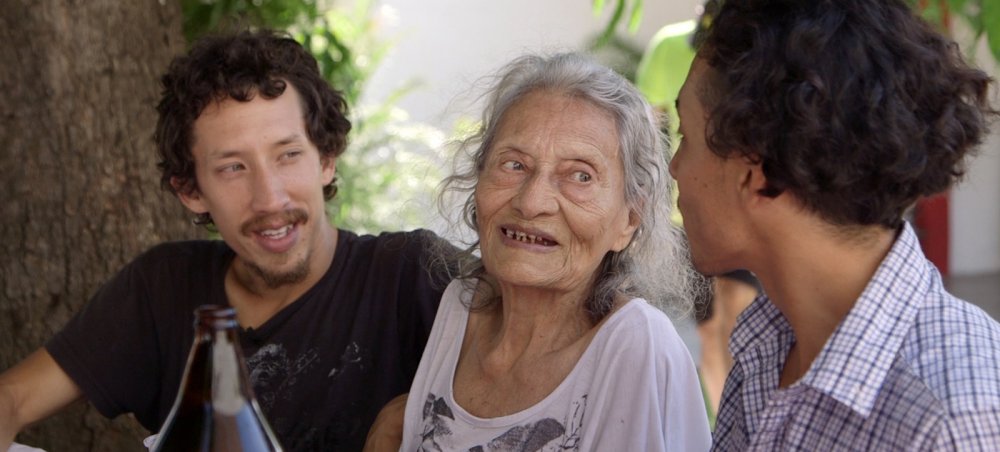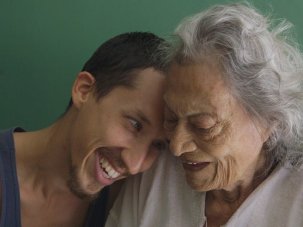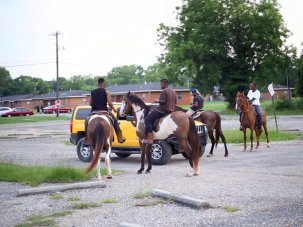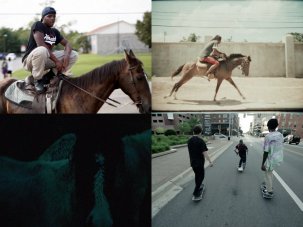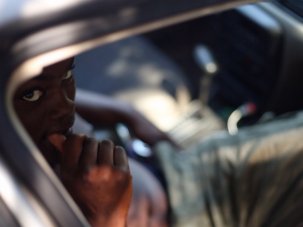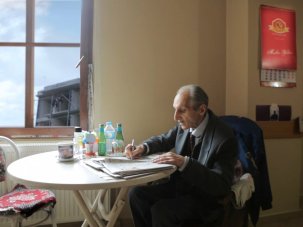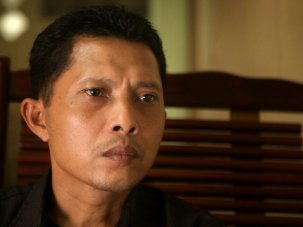Diego emerges through the bustling crowd of Puerto Vallarta beach, Mexico, on a unicycle, in the golden hues of sunset. Another vision; dressed to the nines in stilts and a shimmering Elvis Presley costume, he throws himself around to the Bee Gees Stayin’ Alive, for an unresponsive crowd. We watch him waxing surf boards, making small talk with American tourists. A twentysomething entertainer, surf instructor and seasonal jack of all trades, Diego seamlessly navigates the transient spaces of the resort town – a place where tourists benefit from the local economic insecurity.
América screens at Bertha DocHouse, London from 8 February, and is reviewed by Hannah McGill in the March 2019 issue of Sight & Sound.
This is the beginning of América, a documentary initially intended to focus on the beach tourism of Puerto Vallarta, which took a dramatic shift when filmmakers Erick Stoll and Chase Whiteside decided to abandon their original idea and follow Diego back to his hometown, Colima. They had met him at a birthday party and hit it off. He had just lost his apartment, and they agreed to let him stay at theirs for a few nights which turned into six months.
“And we became really good friends” recalls Stoll. “We filmed around his work as a circus artist in the tourist industry. But then his grandmother, América, had an accident. She fell out of bed. And Diego’s father [Luis], who had been caring for her, was imprisoned as a result of all this. And so he had to go back to Colima, his hometown. And we decided to follow him, initially as a friend. But then I was introduced to América and Rodrigo and got a sense of what this meant. This wasn’t just going to be a quick weekend trip – Diego’s life was changing, was changed, and would be changed.”
Diego’s brother Rodrigo and his girlfriend Cristina were taking care of América at their place when Diego joined them, followed a few months later by the third brother, Bruno. Impressed with Diego’s total ease with América, Stoll followed his lead and overcame his fears of not being able to help provide the care América needed.
Diego’s affectionate tenderness is a side of masculinity that we seldom see represented or depicted in film with such intimacy. “We feel pretty alienated from certainly a lot of different masculinities,” says Stoll, speaking for both himself and Whiteside. “So I think it was a very funny and unlikely thing that we got ourselves involved with these three brothers who are masculine in their own ways but also deeply sensitive, sensual, non-masculine people in their own ways.”
Diego performs acrobatics for América as she sits in the garden surrounded by fallen mangoes. One way or another the three brothers are all performers, be it with Bruno and Diego’s circus tricks or Rodrigo’s sound immersion therapy, which provides another level of respite. “Not always, but generally [the gong baths] come in the film after some of the most emotionally deep scenes and there’s no score otherwise,” says Stoll. “So it’s our only chance to really pause the sound and the narrative and progression of the film. And just be in an abstract sound space. So to us, it was very useful structurally to just pause from these ever-ratcheting up tensions in the house. And to just feel, and be in it.”
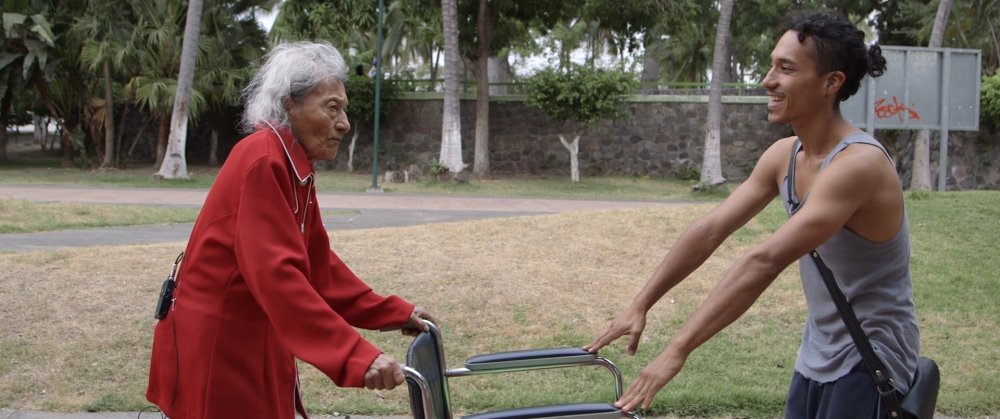
Perhaps unexpectedly, given the subject, América is often funny. It has a lightness and vibrancy that captures the situation and characters with all their complexity and adversity, but also with warmth.
Stoll ended up living with the family on and off for a year, consulting with Whiteside long-distance about how to proceed with their film. “[The brothers] thought Luis would be in jail for a few weeks. And they didn’t know how long América would live after her accident. She was in the hospital. She wasn’t doing very well. So we had no idea of the trajectory. But we committed ourselves to it, for me at least, sort of being inspired by their positive ambition. Most of the work Chase and I have made together [political, activist short films] has been cynical because that’s sort of our ethos – including the project idea we had in Vallarta, which was still this kind of visual, cynical humour. So to find ourselves suddenly bearing this profoundly intimate and sensitive story and imagery and relationships that we fostered, and were a part of, was so different.”
Despite the characteristics of dementia that cloud her personality, América is a delight to watch: enjoying Diego’s company, admiring Cristina, playing along with their performances, chiding them when they think she can’t hear. Consent, though, was a tricky issue, due to the elusive short-term memory that comes with her illness. In one sequence she acknowledges the camera, asking Diego what’s being filmed. He tells her she’s the subject because she’s a star – “a startled star”, she laughs.
“The reason we included the scene is, while it’s a lovely, wonderful little moment,” says Stoll, “it’s also trying to be transparent about América’s relationship to the camera and compromised ability to give us that long-term consent that is generally stressed when talking about documentary and ethics. Sometimes she would be really playful and do little poses and other times she would say, ‘Please leave me alone with the camera.’ And we would. It was a fluid thing of always explaining it and talking about it again.”
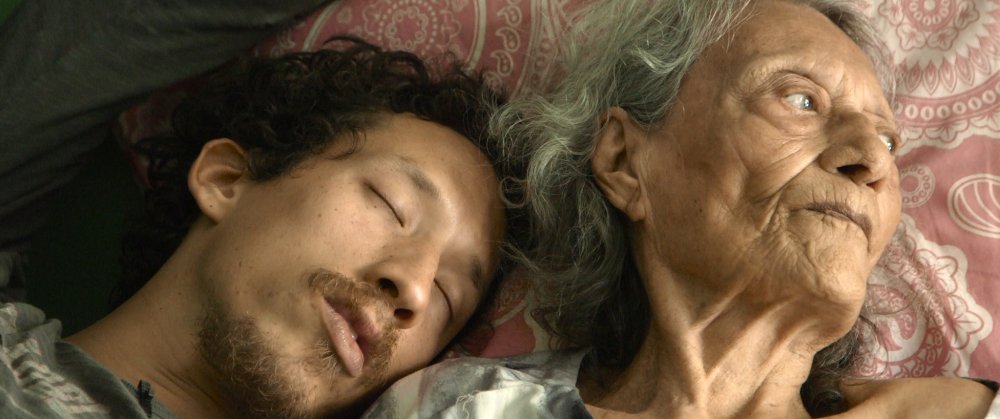
There is a tension between the brothers that emerges in the documentary, surrounding ideas of consciousness and América’s qualitative experience of life. América often swings into confusion and fear of her surroundings, and Stoll grappled with the impact of his own presence in the circumstances – the fear that it may have encouraged more performative behaviours from the brothers. He expresses his surprise about how many people approached him after the film to discuss a particularly difficult scene in which Bruno’s good intentions with América pushes her beyond her abilities. Audience members who identified as either professional care-workers, or who had provided long-term care for older relatives, told him they knew exactly what Bruno was going through in that moment: “Just really needing someone to do something and thinking or believing that they can,” Stoll says. “And then getting frustrated. In thinking about that scene, I’ve only become more forgiving of Bruno over time, if less forgiving of how my presence may have been.”
“[Bruno] walked her every single day, you know.” Stoll describes how América’s health visibly improved over the months that the brothers cared for her. “Between the first few months that they were living with América and five months later when Bruno was around, América’s body had changed. She just looked more robust. She looked good. And I think that isn’t just because Bruno was walking her, I think it was the five or six months of care and attention they’d been giving her. She was getting stronger, more lucid, more present.”
“It’s funny because Diego gets these questions in Q&As: “How did you learn to be so kind or so tender? How did you do this or that?” And he would always answer – it was kind of a joke but I think he also means it – ‘Well, América showed me. América taught me.’ And I think that’s also true for Chase and me, finding the tenderness and maturity to make the film and tell the story: again, just spending time with América changed us. And then also with just how suddenly having something so tender and so sensitive that was our responsibility to shape. But, I think just through witnessing everything they went through, both the difficulties of being a caregiver, the difficulties of being a person who needs care, of their financial difficulties in doing it, of the stresses it put upon one another, on the lack of support that they were receiving from the State or any local institution, it was a real education for us.”
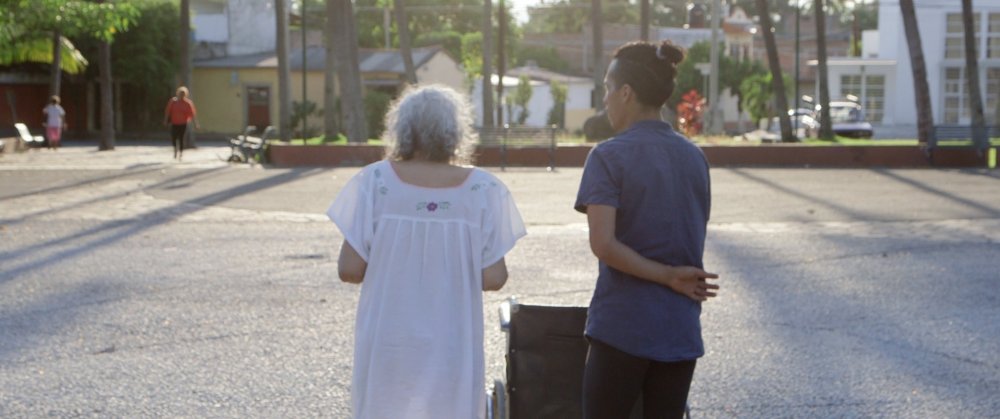
América has started an important conversation about care and support systems. In the US audiences were divided with their responses. “It became this sort of binary between nursing home or caring for parents at home.” remarks Stoll. “This isn’t the point in the film, but this is certainly how I feel after watching what they went through, is that caring and care-giving should not be conceived of as a moralistic, personal or familial responsibility. I think it’s arguably a human right for people to receive good care. But beyond that, I think it’s a social obligation. And I think we all have a collective responsibility to care for one another. And that can mean a lot of things, but as it relates to this specific issue, practically it’s wages and stipends for home caregivers. Robust, professional and educational support for people who choose to care-give.”
Beyond a portrait of a family, and the compassion and work they provide in stretched conditions, making the film has drawn Stoll’s attention to the notion of care and the people who give it – which is an urgent and universally neglected issue. “Within the context of the States, and I presume a lot of Europe: home care, care work, non-familial care at home, is all historically work that women, women of colour, immigrants and indigenous women do, are forced to do or are paid incredibly low wages to do. When you think about what economies and markets and social structures should do, and how they prioritise what matters… it’s hard to think of something of a higher importance, or just a necessary function for good living as we age, than that we are cared for and that those who care for us are also cared for. Right?”
-
The Digital Edition and Archive quick link
Log in here to your digital edition and archive subscription, take a look at the packages on offer and buy a subscription.




